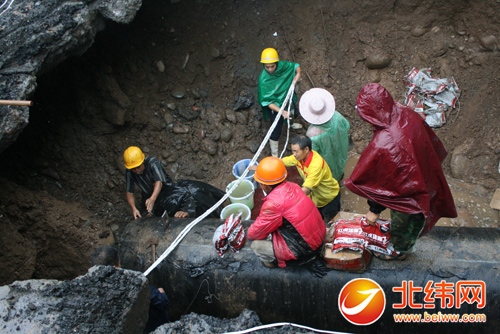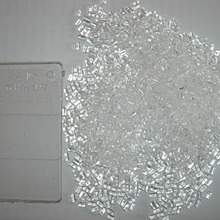Wendelstein 7
Scientists toiling away on the cutting edge Wendelstein 7-X nuclear fusion reactor in Germany have pulled together results from their latest round of testing, with a few records to be found amongst them. Following a series of upgrades, the team is reporting the experimental device has achieved its highest energy density and the longest plasma discharge times for device of this type, marking another step forward in the quest for clean fusion power.
Can something like the Wendelstein 7-X someday be used as part of a zero-emission power plant? Like other experimental nuclear fusion reactors, it is designed to recreate the reaction that takes place in stars, just like our own Sun. The idea is to use magnetic fields to suspend a heated stream of plasma long enough for atomic nuclei within it to fuse together, releasing tremendous amounts of energy in the process.
But holding a stream of plasma in place with magnetic fields isn't easy, especially when it needs to reach temperatures hotter than the Sun. For some time, scientists pursued this through what are known as tokamak fusion reactors, simpler devices built to suspend the plasma stream inside a chamber in nicely rounded doughnut-like shape.
By contrast, Wendelstein 7-X is what is known as a stellarator nuclear reactor. Rather than a clean doughnut shape, it takes a highly complex form using 50 superconductive magnetic coils to hold plasma inside a containment field that twists and turns through an irregular loop. It is hoped this approach can prevent the plasma streams drifting into the outer walls of the reactor and collapsing.
Though the idea of a stellarator first bobbed up at Princeton way back in 1951, the calculations they require were seen as too complex to realistically entertain until the arrival of the supercomputer. Even then the Wendelstein 7-X took 15 years to put together, but the result is the largest and most sophisticated stellarator device the world has ever seen.
Scientists at the Max Planck Institute for Plasma Physics first fired it up in December 2015, and have made regular strides forward since then. That initial flash of helium plasma lasting one tenth of a second was followed up months later with the first burst of hydrogen plasma, lasting all of a quarter of a second.
(责任编辑:资讯)
-
尝“鲜”盛宴,等你来探!2024年清远西牛麻竹笋尝鲜季即将启幕
 尝“鲜”盛宴,等你来探!2024年清远西牛麻竹笋尝鲜季即将启幕_南方+_南方plus品西牛麻竹笋,尝天下第一鲜。眼下正值麻竹笋丰产的黄金时期,此时的笋肉质细嫩,水分饱满,味道清甜,成为食客们的尝鲜首选
...[详细]
尝“鲜”盛宴,等你来探!2024年清远西牛麻竹笋尝鲜季即将启幕_南方+_南方plus品西牛麻竹笋,尝天下第一鲜。眼下正值麻竹笋丰产的黄金时期,此时的笋肉质细嫩,水分饱满,味道清甜,成为食客们的尝鲜首选
...[详细]
-
 ...[详细]
...[详细]
-
 天梯的守护人村办球赛好少年礼让老年人先上车历时5个月时间,经过初选和终评环节,日前,雅安“文明随手拍”竞赛活动圆满结束。组委会评出了一等奖2幅,二等奖5幅,三等奖13幅。雅安“文明随手拍”竞赛活动由市
...[详细]
天梯的守护人村办球赛好少年礼让老年人先上车历时5个月时间,经过初选和终评环节,日前,雅安“文明随手拍”竞赛活动圆满结束。组委会评出了一等奖2幅,二等奖5幅,三等奖13幅。雅安“文明随手拍”竞赛活动由市
...[详细]
-
骏马也会为爱“狂”! 2023融廉情·融水非遗“苗族斗马”太嗨了!
 骏马也会为爱“狂”! 2023融廉情·融水非遗“苗族斗马”太嗨了!_南方+_南方plus9月16日,2023融廉情·融水非遗“苗族斗马”在融水民族体育公园斗马场精彩上演!观众台座无虚席,活动现场人声鼎
...[详细]
骏马也会为爱“狂”! 2023融廉情·融水非遗“苗族斗马”太嗨了!_南方+_南方plus9月16日,2023融廉情·融水非遗“苗族斗马”在融水民族体育公园斗马场精彩上演!观众台座无虚席,活动现场人声鼎
...[详细]
-
The Future of Tech: The Desktop PC
If you're over a certain age, you'll probably know that people have been foretelling the death of th ...[详细]
-
 提要◆8月31日中午12点,市第三水厂DN800源水取水管破裂,导致第三水厂无法取水生产,市区内供水缺压。◆出现这次管道破裂的原因一方面是由于受“4·20”芦山强烈地震影响,导致管道移位;另一方面是由
...[详细]
提要◆8月31日中午12点,市第三水厂DN800源水取水管破裂,导致第三水厂无法取水生产,市区内供水缺压。◆出现这次管道破裂的原因一方面是由于受“4·20”芦山强烈地震影响,导致管道移位;另一方面是由
...[详细]
-
 两辆小车穿出排队等候的车流,占据对向车道逆行雅安日报讯日前,记者驾车行至国道318线飞仙关路段时,由于前方几辆大货车行车缓慢,对后方车辆造成了短时间的堵车,后面的车辆只得排队缓慢行驶。但正是在这样的情
...[详细]
两辆小车穿出排队等候的车流,占据对向车道逆行雅安日报讯日前,记者驾车行至国道318线飞仙关路段时,由于前方几辆大货车行车缓慢,对后方车辆造成了短时间的堵车,后面的车辆只得排队缓慢行驶。但正是在这样的情
...[详细]
-
 8月31日中午,雅安市第三水厂突发取水管道破裂,无法正常取水生产。受此影响,市区内大部分区域出现供水不足的情况,高层住户出现停水情况。对此,市民们纷纷想办法,在缺水的情况下保持正常生活。一水多用洗菜洗
...[详细]
8月31日中午,雅安市第三水厂突发取水管道破裂,无法正常取水生产。受此影响,市区内大部分区域出现供水不足的情况,高层住户出现停水情况。对此,市民们纷纷想办法,在缺水的情况下保持正常生活。一水多用洗菜洗
...[详细]
-
11 Telescopes Exploring The Magic of Space
 Perhaps no invention has broadened our understanding of the universe more than the telescope. The ve
...[详细]
Perhaps no invention has broadened our understanding of the universe more than the telescope. The ve
...[详细]
-
 雅安日报讯17日,雨城区关工委关爱工作团与来自成都、上海以及本地的爱心人士组成“爱心联盟”,一同为雨城区福寿敬老院的老人们送去价值近8千元的爱心物品。“有这么多人来看望我们,让我们很感动。”已在敬老院
...[详细]
雅安日报讯17日,雨城区关工委关爱工作团与来自成都、上海以及本地的爱心人士组成“爱心联盟”,一同为雨城区福寿敬老院的老人们送去价值近8千元的爱心物品。“有这么多人来看望我们,让我们很感动。”已在敬老院
...[详细]

 无核黄皮也能做月饼?快来云浮郁南尝尝鲜
无核黄皮也能做月饼?快来云浮郁南尝尝鲜 节后遇“倒春寒” “暖经济”再掀热潮
节后遇“倒春寒” “暖经济”再掀热潮 节后综合征来袭 自我调节是关键
节后综合征来袭 自我调节是关键 Slot extends perfect Liverpool start
Slot extends perfect Liverpool start
